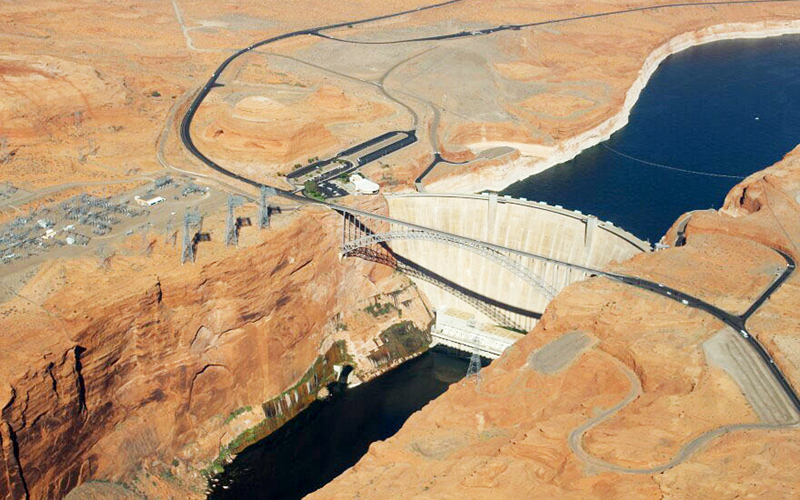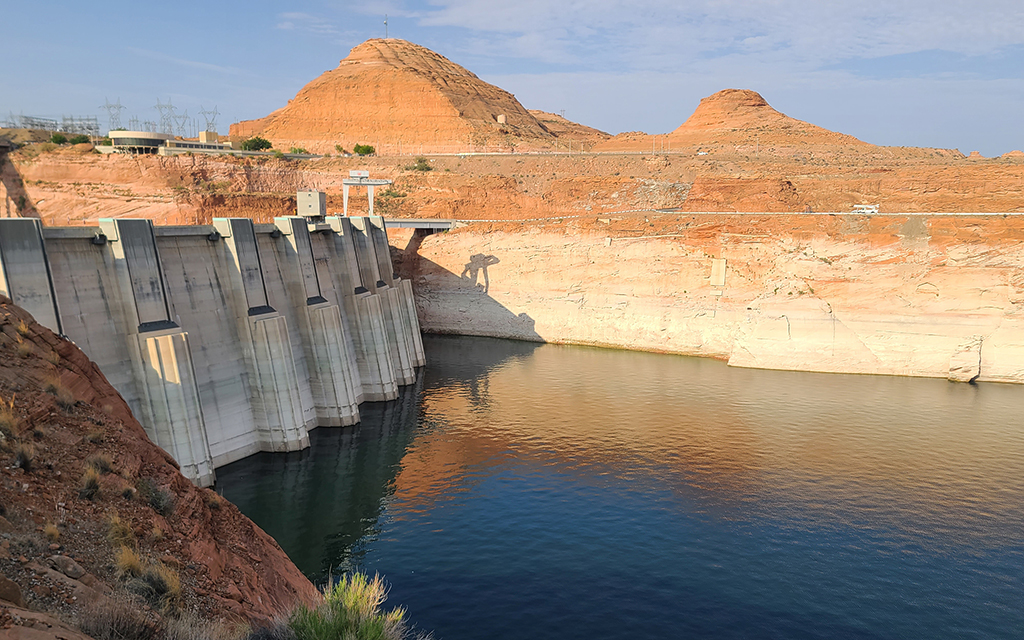The U.S. Bureau of Reclamation announced two measures Tuesday to boost water levels in Lake Powell, keeping them high enough to continue generating hydropower at the Glen Canyon Dam.
Both moves are being framed as painful but necessary Band-Aids, cutting into reserves elsewhere in the region to stave off the worst effects of a two decades-long drought across the Colorado River Basin that has sapped the nation’s second-largest reservoir.
One measure will send water from upstream to help replenish Powell. About 500,000 acre-feet of water will be released from Flaming Gorge Reservoir, which straddles the Wyoming-Utah line.
Another measure will reduce the amount of water sent downstream from Lake Powell. About 480,000 acre-feet will be withheld from Lake Mead, the nation’s largest reservoir, which provides storage for California, Arizona and Nevada. An acre-foot is the amount of water needed to fill 1 acre of land to a height of 1 foot, which is enough water for one to two households for a year.
“We are taking extraordinary actions today,” said Tanya Trujillo, assistant secretary of water and science with the U.S. Department of the Interior. “That is because now is the time to do more. We do not have time to waste.”
Lake Powell urgently needs more water. Water levels there are the lowest they have ever been – and still dropping. The big-picture concern is the water supply for millions across the Southwest, but the immediate issue is that the low levels threaten to halt hydropower generation at the Glen Canyon Dam.
At 3,490 feet, Glen Canyon Dam reaches “minimum power pool.” Some experts think attempting to generate hydropower at that level could damage equipment inside the dam by allowing air pockets into the turbines that generate electricity. Even lower, at 3,370 feet, the reservoir hits “dead pool,” at which point water no longer can pass through the dam by the power of gravity. As of Tuesday, the water level at Lake Powell was at 3,522 feet.
These measures are narrowly designed to temporarily stall those dropping levels, specifically to avert the hydropower shutoff. Water experts say more permanent changes are needed as declining levels will threaten water supplies to the 40 million people who depend on the Colorado River.
“It’s an immediate fix that will help maintain the reliability of power,” said Bart Miller, Healthy Rivers program director at Western Resource Advocates. “But it’s also short term, and it’s not enough. There is a consistent pressure to react to these risks because of the bad hydrology, and that reinforces the need for more action.”
Miller emphasized the need for water conservation measures and reductions of water use. Trujillo expressed the same sentiments in remarks about the federal plans.
“We need to immediately engage in the development of additional conservation measures if we continue to see the dry hydrology we see for some time,” she said. “We will all have to find ways to maximize efficiency and use less water. So many of the communities that rely on the Colorado River already know this and are already taking additional measures now. But we will all need to do more.”
The next major milestone in the management of the Colorado is in 2026, when water users will release a new set of operating guidelines for distribution. That deadline looms large, but historic drought – which is quickly getting more severe as a result of climate change – has forced the need for many patchwork measures before the new rules are due.
“I don’t think that we’re going to make it to 2026,” said Eric Balken, executive director of the Glen Canyon Institute.
“With every year of this drought continuing,” he said, “it becomes more and more likely that we’re going to dip below (minimum) power pool. So I understand why all these steps are being taken to prevent that happening, but the likelihood of it happening is high enough that we should make a plan for that.”
The new federal plans to prop up Lake Powell might not be enough. The Bureau of Reclamation left the door open for additional water releases later this year from Blue Mesa Reservoir in Colorado and Navajo Reservoir in New Mexico.

